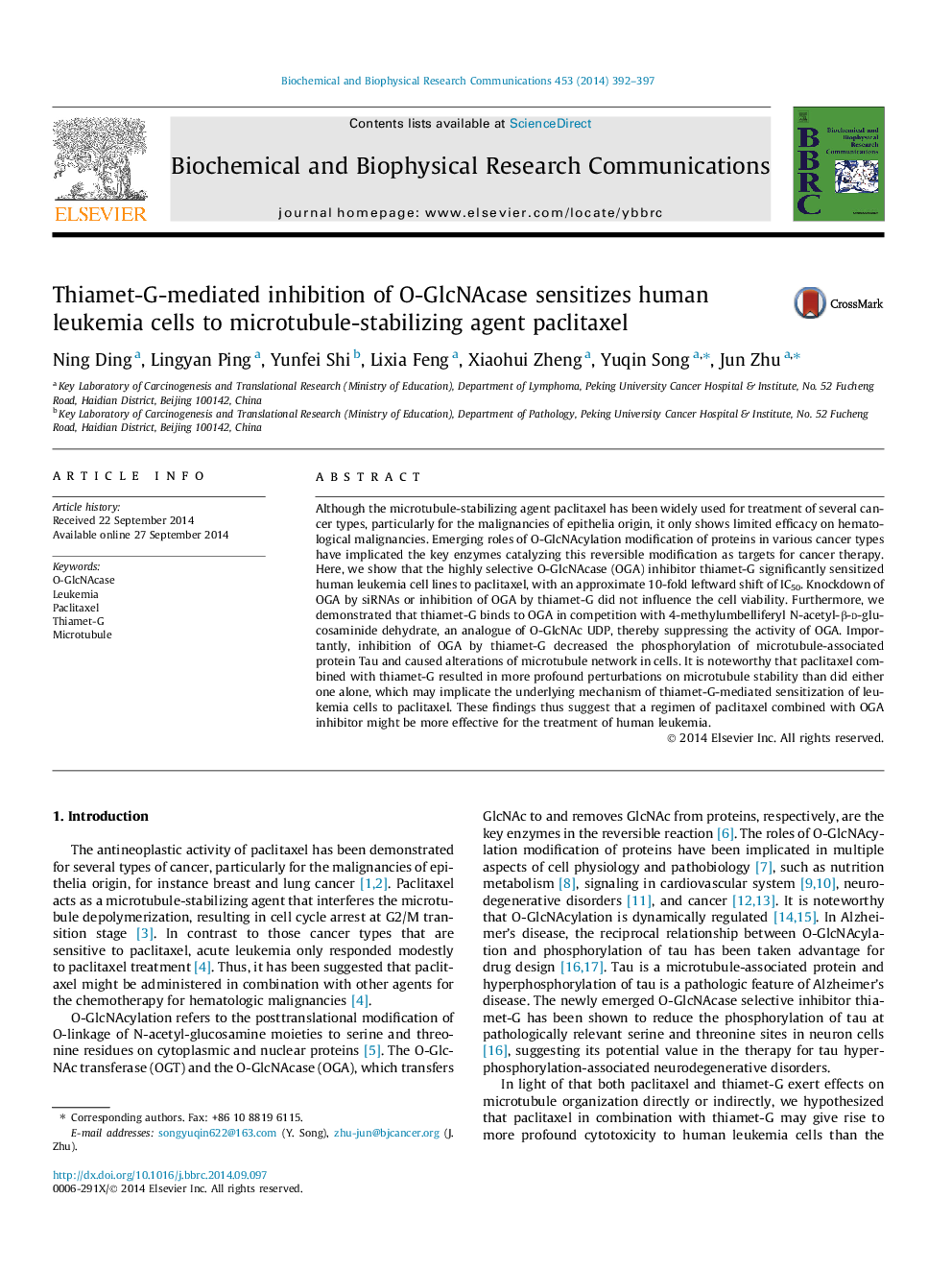| Article ID | Journal | Published Year | Pages | File Type |
|---|---|---|---|---|
| 1928419 | Biochemical and Biophysical Research Communications | 2014 | 6 Pages |
•OGA-selective inhibitor thiamet-G sensitized human leukemia cells to paclitaxel.•siOGAs or thiamet-G treatment did not influence the cell viability.•Thiamet-G binds to OGA in a competitive manner.•Thiamet-G alters Tau phosphorylation and microtubule network.
Although the microtubule-stabilizing agent paclitaxel has been widely used for treatment of several cancer types, particularly for the malignancies of epithelia origin, it only shows limited efficacy on hematological malignancies. Emerging roles of O-GlcNAcylation modification of proteins in various cancer types have implicated the key enzymes catalyzing this reversible modification as targets for cancer therapy. Here, we show that the highly selective O-GlcNAcase (OGA) inhibitor thiamet-G significantly sensitized human leukemia cell lines to paclitaxel, with an approximate 10-fold leftward shift of IC50. Knockdown of OGA by siRNAs or inhibition of OGA by thiamet-G did not influence the cell viability. Furthermore, we demonstrated that thiamet-G binds to OGA in competition with 4-methylumbelliferyl N-acetyl-β-d-glucosaminide dehydrate, an analogue of O-GlcNAc UDP, thereby suppressing the activity of OGA. Importantly, inhibition of OGA by thiamet-G decreased the phosphorylation of microtubule-associated protein Tau and caused alterations of microtubule network in cells. It is noteworthy that paclitaxel combined with thiamet-G resulted in more profound perturbations on microtubule stability than did either one alone, which may implicate the underlying mechanism of thiamet-G-mediated sensitization of leukemia cells to paclitaxel. These findings thus suggest that a regimen of paclitaxel combined with OGA inhibitor might be more effective for the treatment of human leukemia.
